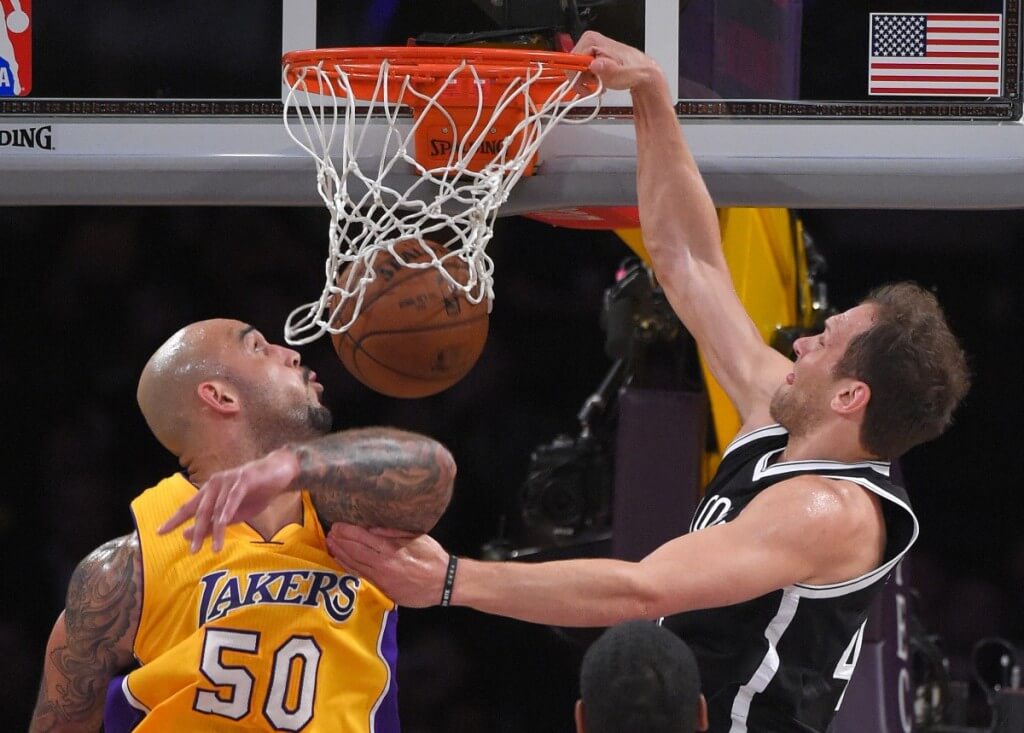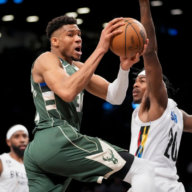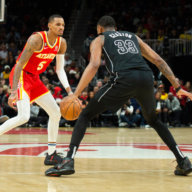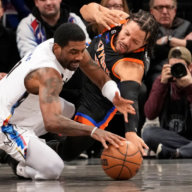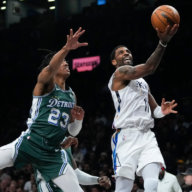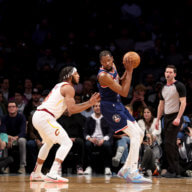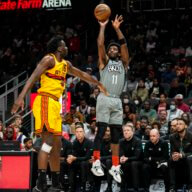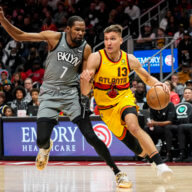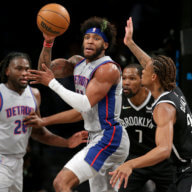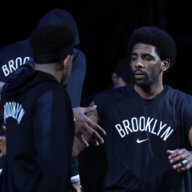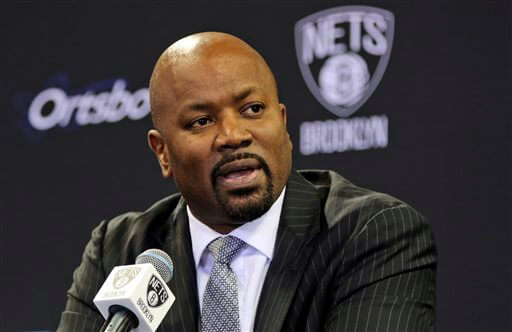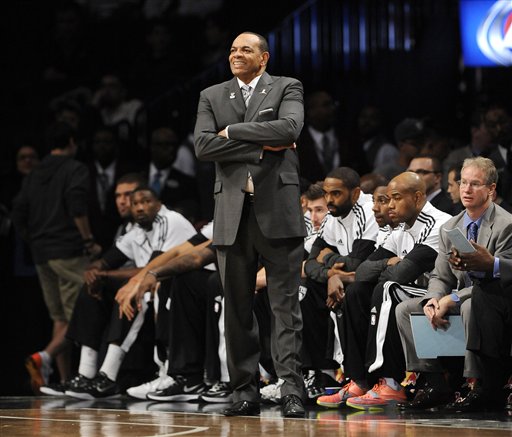2) A new way to score.
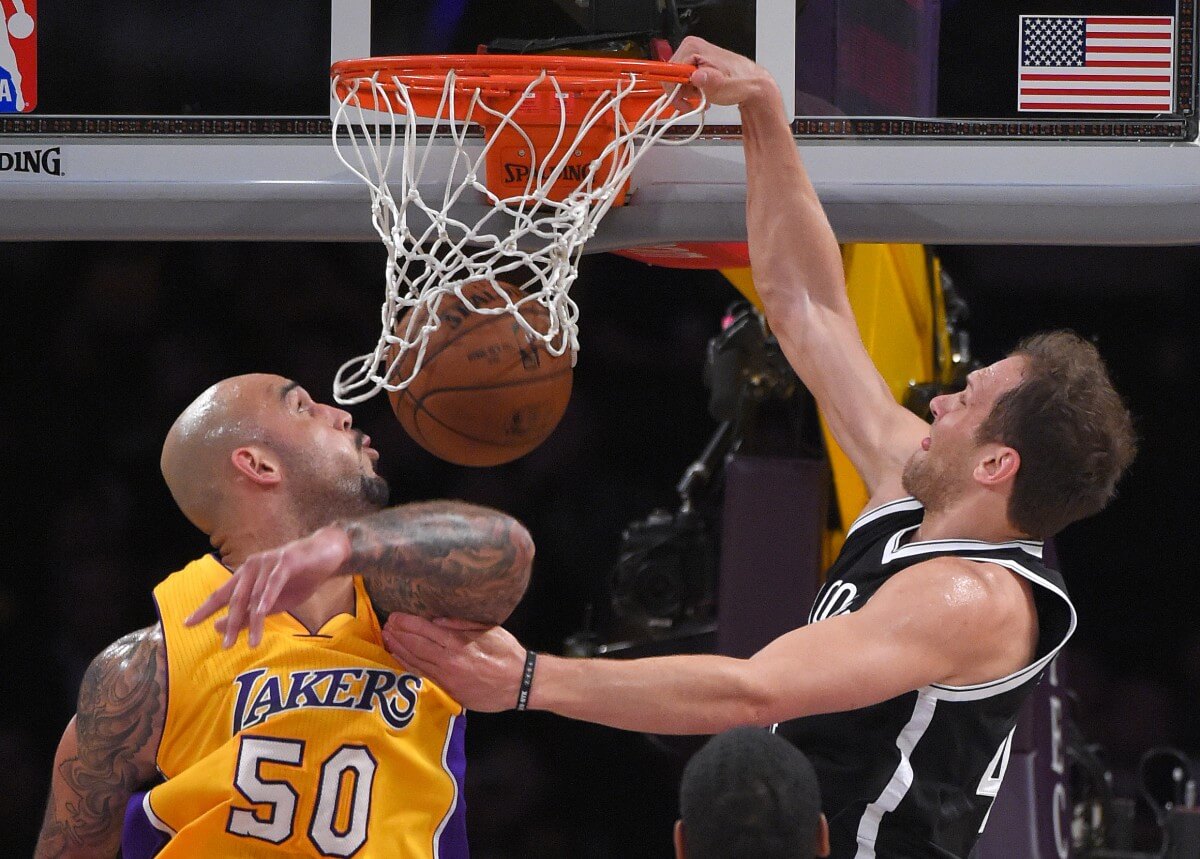
It’s weird, anti-conventional, and so far, it’s working.
With the Nets down Kevin Garnett and Mirza Teletovic, Lionel Hollins has hesitated to insert Thaddeus Young into the starting lineup, instead sticking with a guard-heavy rotation that features Deron Williams, Markel Brown, Alan Anderson, and Joe Johnson.
It looks odd at the outset. With this lineup, the Nets essentially punt rebounding and post defense in favor of wing defenders, floor spacers, and athleticism[note]Okay, ONE elite athlete. It’s still an upgrade.[/note]. In 70 minutes together[note]Yes, a five-game sample size comes with all of the caveats. So let’s just make that caveat here and move on.[/note], it’s paid dividends: though the Nets have been out-rebounded heartily, they’ve made up for it by forcing turnovers, playing at a break-neck pace, firing away from three-point range, and getting to the rim. It also helps that when the Nets look to get bigger and stronger, they can simply substitute the newly acquired Thaddeus Young, a hybrid forward that can stretch the floor and play inside.
Though it bears a similarity to last year’s “longball” lineup, the production has looked similar to “Moreyball,” the famed threes-layups-free throws style popularized by Daryl Morey’s Houston Rockets.
The Nets throw a bit of a twist on the Moreyball formula; since their lack of athleticism means less opportunities directly at the rim, they’ve taken advantage of their ability to score inside the paint in other ways. Call them the mini-Moreys.
Prior to the All-Star break, the Nets scored 77 points per game[note]Technically, per 48 minutes.[/note] from in the paint, at the line, and beyond the arc. In the five games since the break, they’ve scored close to 91 points per game in these three areas. It’s a staggering leap; they currently lead the NBA in points in the paint per game since the break. Thaddeus Young replacing Kevin Garnett in the rotation is a big part of that, but their starting lineup has also looked to attack inside and out.
The versatility allows them to switch in a pinch on almost anyone and force an opposing offense to either quickly exploit mismatches or risk losing the ball. Anderson is a key there; he’s not a particularly talented player, but thrives when playing with the team’s best scorers, with his focus on spacing the floor on offense and checking a wing scorer on the other end. NBA coach Flip Saunders once described chemistry in the NBA to Britt Robson as, in Robson’s words, “establishing a pecking order that allows the players to recognize and settle into their proper roles on the team.” A team’s best five-man lineup doesn’t necessarily mean their five most talented players, but the five players who interact on the floor most efficiently to give their team a chance to score and defend. Anderson falls into his role, so to speak.
The other pieces also fall into place. At 6’7″ and 240 pounds, Johnson is big enough to withstand some punishment inside and quick enough to take advantage with spot-up threes and deceptive floaters off the dribble. Thank the Bikram style yoga for that. He’s performed admirably as a nominal power forward, averaging over 16 points & eight rebounds per game since the switch. To this point, nobody on the Nets is even averaging seven boards per game.
It’s not clear how long the Nets will stick with this particular look. But even as they switch Young in for one of their wings and rotate Brook Lopez & Mason Plumlee, the principles largely remain the same. The more they limit their mid-range shots — looking at you, Jarrett Jack and Brook Lopez — and maintain that attack mentality, the more games they’ll likely steal down the stretch.

